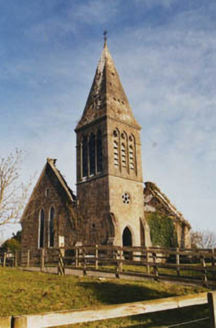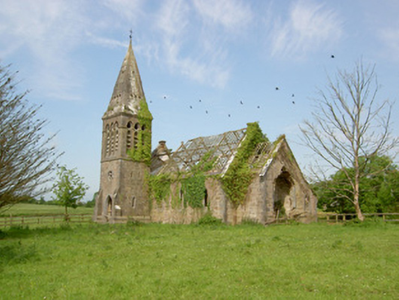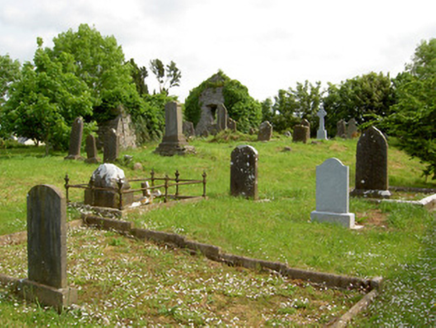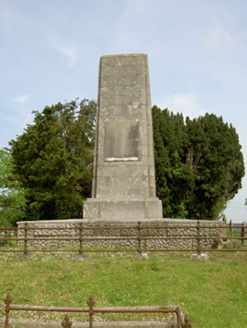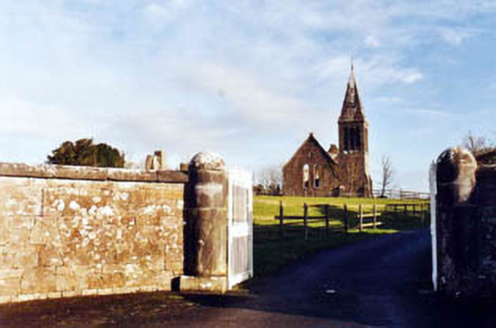Survey Data
Reg No
22206705
Rating
Regional
Categories of Special Interest
Archaeological, Architectural, Historical, Social
Original Use
Church/chapel
Date
1855 - 1865
Coordinates
192584, 134231
Date Recorded
07/06/2005
Date Updated
--/--/--
Description
Detached Church of Ireland church, built 1859-60, comprising four-bay nave, single-bay chancel, vestry to north-east and three-stage corner tower with spire to south elevation. Now in state of ruin. Pitched roof with timber scissors brace roof structure exposed to elements, cast-iron rainwater goods and limestone copings and corbel tables. Dressed roughly-coursed sandstone walls with cut limestone quoins and plinth. North-east gable broken through. Snecked dressed sandstone walls to tower, having buttresses to lowest stage, cut limestone quoins, plinth and string course between upper stages. Pointed arch window openings to nave, two-light and with oculus above to south-west gable and with remains of three-light window to chancel, all with chamfered limestone surrounds. Double-light window to vestry with remains of wrought-iron leaded glazing. Tower has cinquefoil window set into round panel over entrance doorway, triple louvered pointed arch windows to top stage having moulded impost course and trefoils and pointed arches recessed. Pointed arch entrance door to tower with tooled limestone surround, shouldered door opening with limestone surround to vestry. Carved limestone bracketed cornice having tapering ashlar limestone blocks to spire with pointed headed vents and cast-iron cross finial. Rubble limestone walls of ruinous medieval church and limestone memorial to site with recumbent and upstanding grave markers to graveyard. Wrought-iron gates to front of site.
Appraisal
Kilshane Church, although in a state of ruin, is a fine example of nineteenth-century architecture. Commissioned by the Lowe family of Kilshane House, the architect was Joseph Welland. Situated on an elevated site the steeple is a striking feature of grand execution which acts as a focal point within the surrounding countryside. The ruined earlier church to the north-west is a reminder of the continuous religious use of this site.
